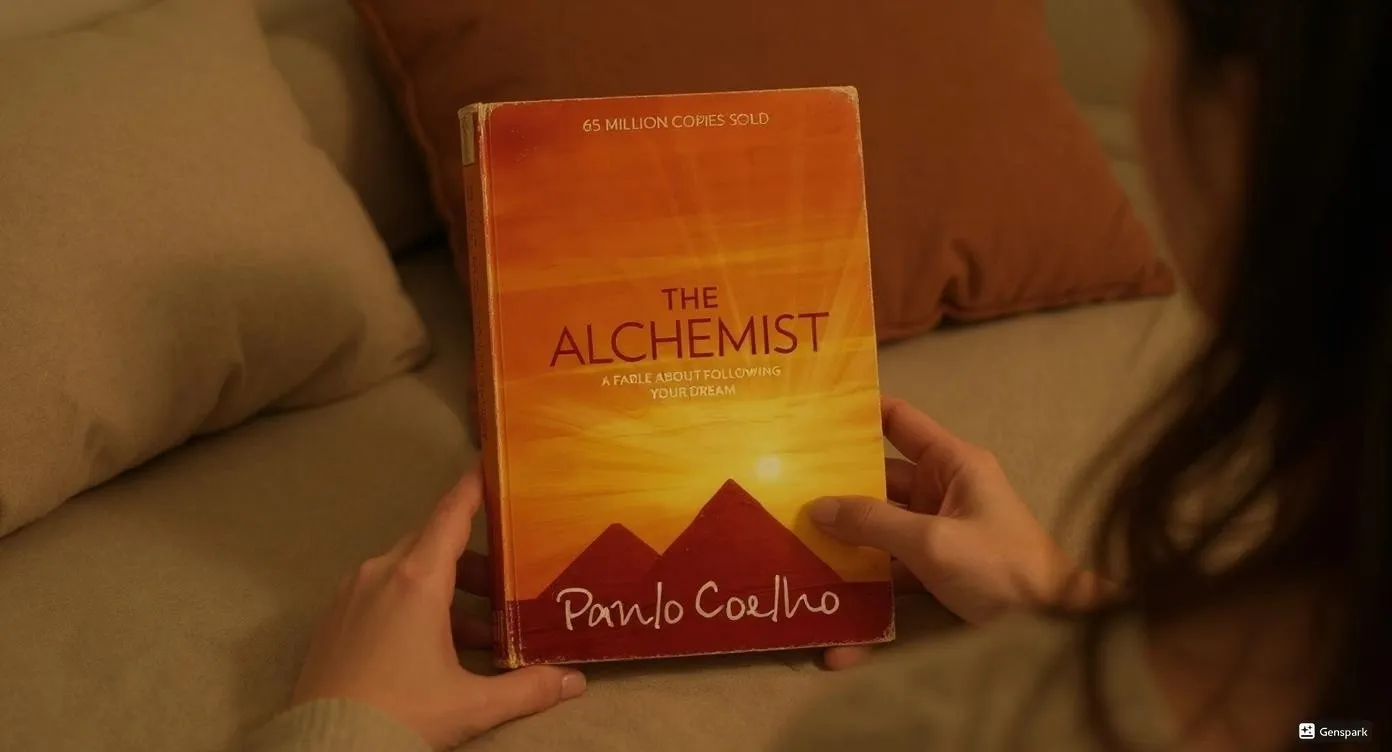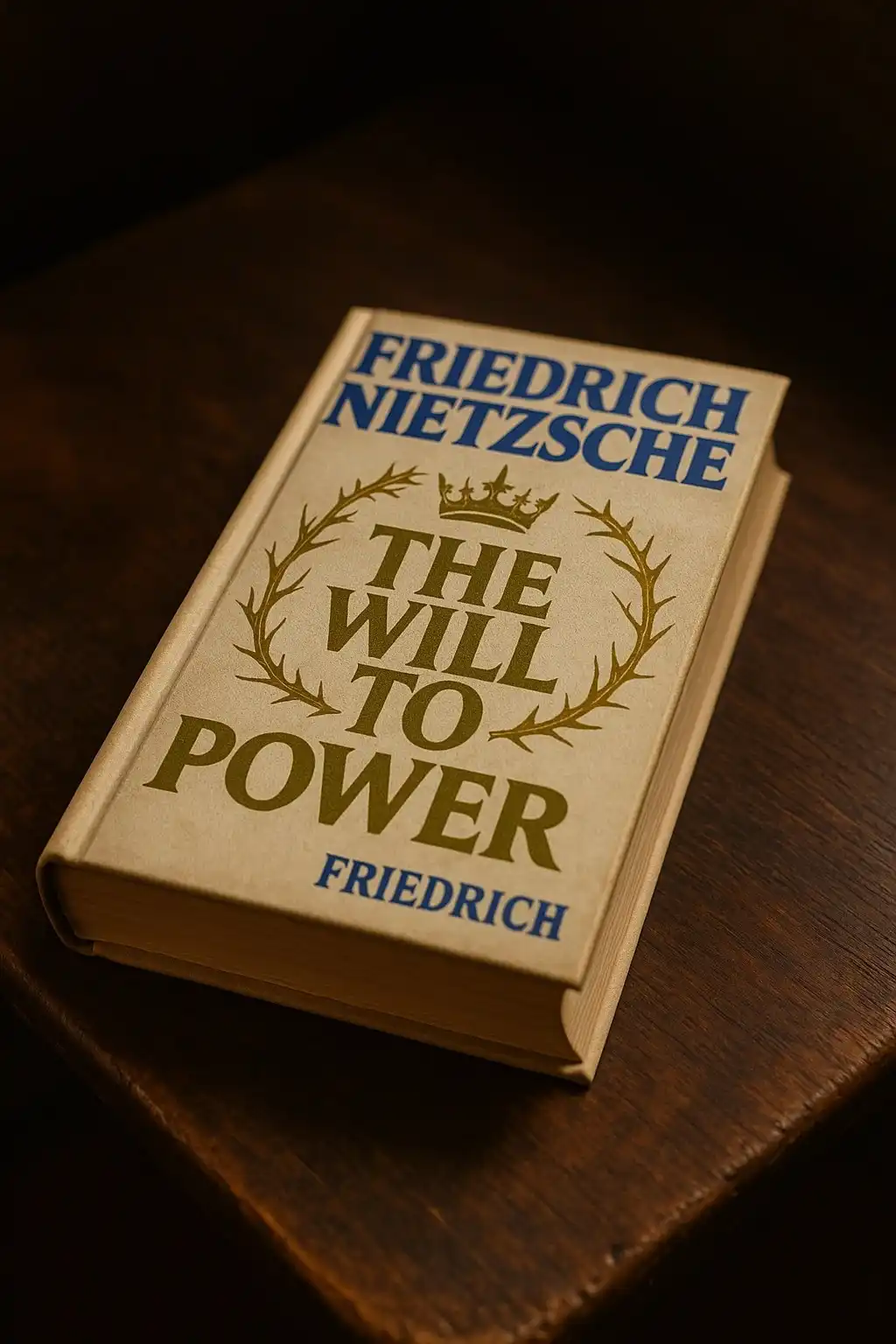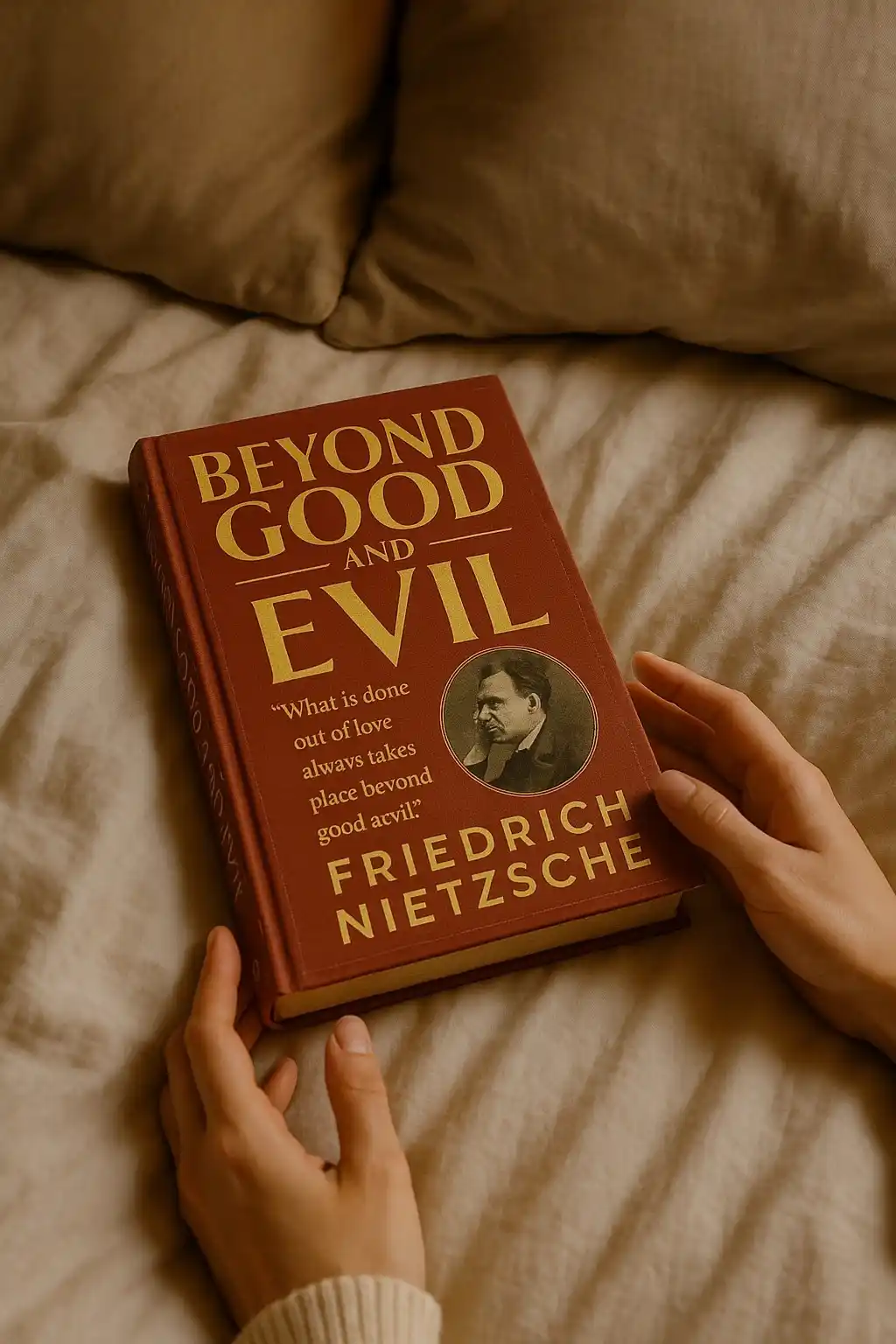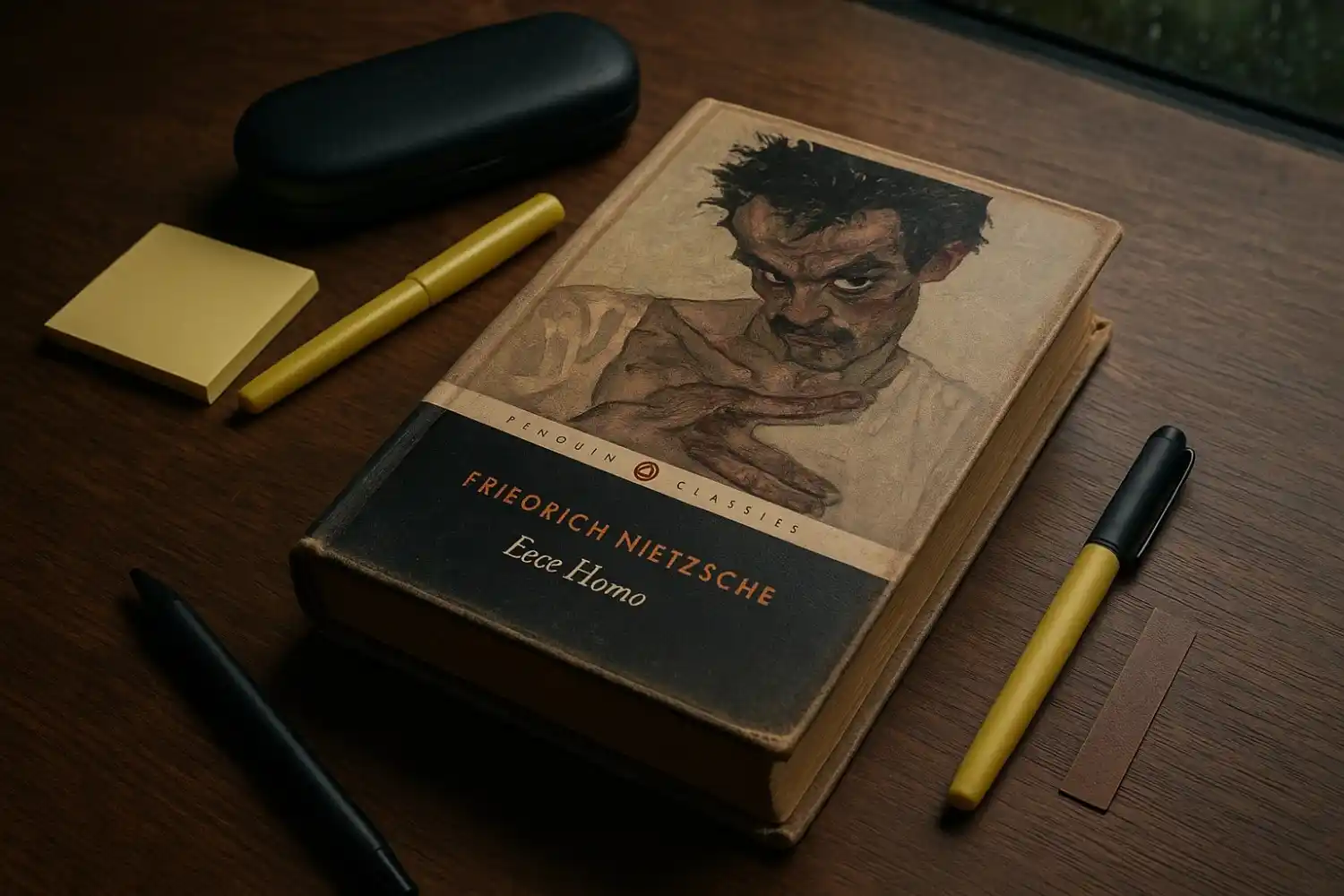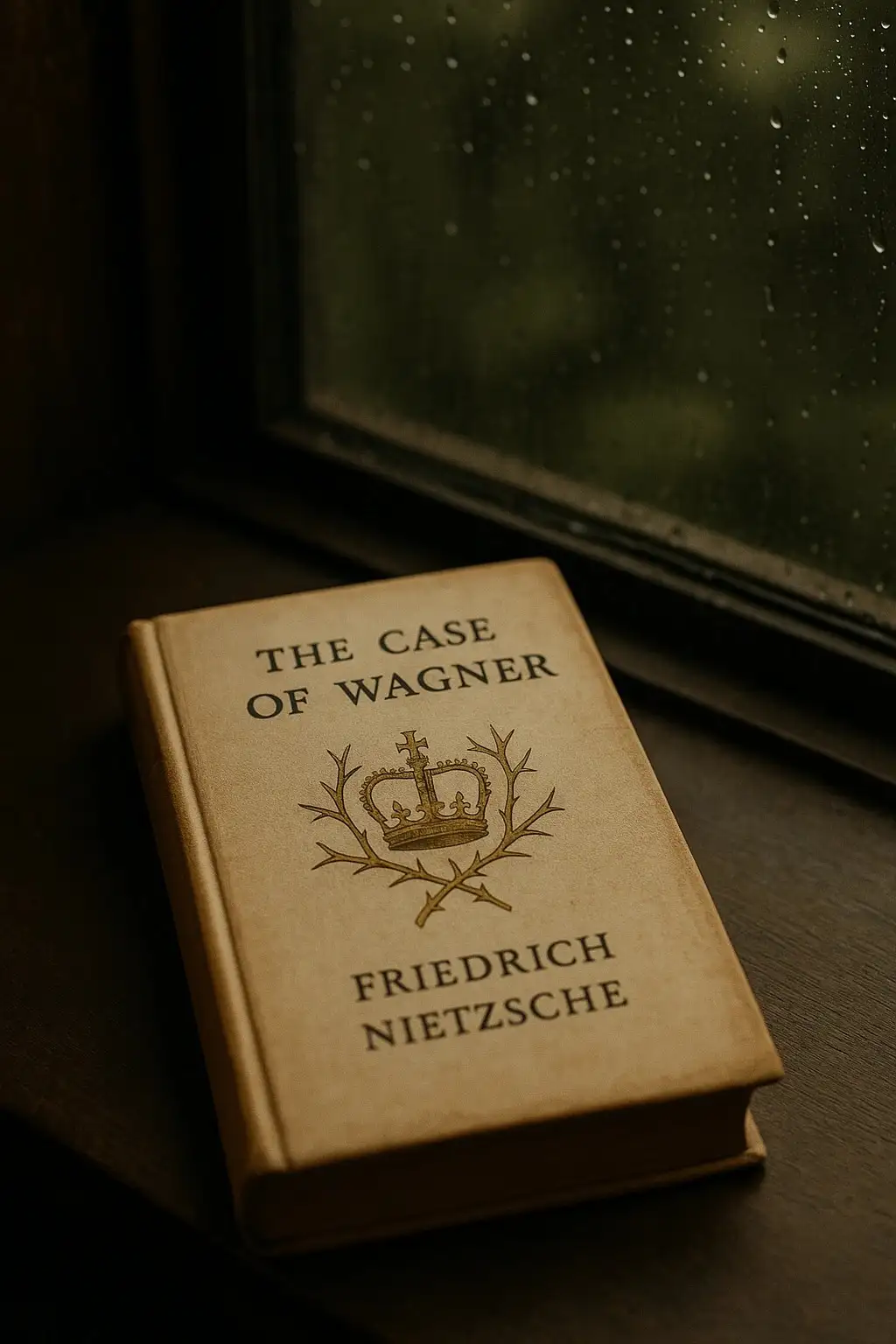The Birth of Tragedy stands as philosophy’s most provocative examination of art and existence. This new work explores Greek tragedy through the lens of Apollonian and Dionysian forces. I picked up this philosophical masterpiece after years of studying existential literature, drawn by its bold challenge to traditional aesthetic theory.
What makes this book extraordinary isn’t just Nietzsche’s revolutionary ideas about art and suffering—it’s how he transforms our knowing of beauty itself. Written when he was just 28, this debut work launched philosophical discussions that continue today.
Wagner praised it, Schopenhauer influenced it, and modern thinkers still grapple with its implications. The book asks whether we need suffering to create true art, a question that feels urgently relevant in our current cultural moment.
Nietzsche presents Socrates as the villain who destroyed authentic Greek art through excessive rationalism, while Apollo represents order and Dionysus embodies chaos. His writing style shifts between poetic brilliance and dense philosophical argument, making some passages soar while others demand careful attention. The book’s central insight—that great art emerges from the tension between opposing forces—offers a framework for knowing creativity that psychology and neuroscience now support.
This isn’t light reading, but it’s absolutely worth the effort for anyone serious about philosophy, art, or psychology. The ideas here planted seeds that grew into Nietzsche’s later masterworks, making this book both historically significant and personally changing.
My months spent with this text left me questioning fundamental assumptions about beauty, truth, and human nature. I got so inspired by this book that I have named this blog website on the name of Dionysus.
Key Takeaways
- Nietzsche‘s dual force theory revolutionizes art understanding: The Birth of Tragedy introduces the Apollonian (order, rationality) and Dionysian (chaos, passion) forces as the foundation of authentic artistic creation, providing a framework that modern psychology and neuroscience continue to validate.
- Greek tragedy achieved perfect artistic synthesis: Nietzsche argues that ancient Greek tragedy represented the ideal fusion of structured dramatic form with raw emotional power, creating an art form capable of transforming human suffering into transcendent beauty.
- Socratic rationalism destroyed authentic art: The philosopher identifies Socrates and later Euripides as villains who killed genuine tragic art by prioritizing logical inquiry over intuitive artistic expression, leading to the decline of meaningful cultural experience.
- The work bridges philosophy and psychology: Written when Nietzsche was just 28, this debut establishes intellectual foundations that influenced existentialism, postmodernism, and modern therapeutic approaches to balancing rational thought with emotional authenticity.
- Cultural renewal requires embracing opposing forces: Nietzsche’s vision for modern cultural rebirth through figures like Wagner emphasizes that creativity and meaning emerge from productive tension between contradictory impulses rather than pure rationalism.
- The book remains urgently relevant today: Despite its flaws and dense philosophical arguments, The Birth of Tragedy addresses contemporary questions about suffering, beauty, and authenticity that resonate with our current cultural struggles over meaning and artistic expression.
Publishing Information: 1872 by E.W. Fritzsch, Leipzig
Genre: Philosophy, Aesthetics, Classical Studies
Series Information: Standalone work, Nietzsche’s first published book
Page Count: Approximately 144 pages (varies by edition)
Main Characters / Figures:
- Friedrich Nietzsche: The author, then a young professor of classical philology, developing his early philosophical ideas.
- Dionysus: Greek god representing chaos, ecstasy, and the irrational, central to Nietzsche’s theory of art.
- Apollo: Greek god symbolizing order, reason, and harmony, contrasted with Dionysus in Nietzsche’s analysis.
- Richard Wagner: German composer, presented as the modern heir to the Greek tragic tradition and to whom the book is dedicated.
Historical Context and Philosophical Background
When I first opened “The Birth of Tragedy” I was struck by how this work emerged from a fascinating intersection of personal ambition and intellectual upheaval in 19th-century Germany. The book represents not just a philosophical treatise but a window into the mind of a young scholar grappling with fundamental questions about art culture and human existence.
Nietzsche’s Intellectual Trip: From Philology to Philosophy
At just 24 years old Nietzsche held the prestigious position of professor of classical philology at the University of Basel. His academic training focused on the technical study of ancient Greek and Latin texts yet his mind was already reaching beyond traditional scholarly boundaries.
The transition from philology to philosophy wasn’t accidental. While studying ancient Greek texts Nietzsche began questioning not just what these works said but what they revealed about the human condition itself. His philological expertise gave him intimate knowledge of Greek culture but his philosophical inclinations pushed him to interpret this knowledge through a revolutionary lens.
This unique combination of rigorous academic training and bold theoretical speculation allowed Nietzsche to approach Greek tragedy from an entirely fresh perspective that traditional scholars had missed.
Schopenhauerian Pessimism and the Question of Life’s Worth
Arthur Schopenhauer’s philosophy cast a long shadow over Nietzsche’s early thinking particularly his pessimistic view that existence was fundamentally suffering. Schopenhauer argued that life’s inevitable pain made existence barely tolerable and that art offered only temporary escape from this harsh reality.
When I examine Nietzsche’s relationship with Schopenhauerian thought I see both attraction and rebellion. While accepting Schopenhauer’s diagnosis of life’s inherent suffering Nietzsche refused to accept his teacher’s solution of resignation and withdrawal from life. Instead he found in Greek tragedy a different response to existence’s fundamental challenges.
The Greeks according to Nietzsche didn’t deny life’s suffering but transformed it into something beautiful and affirmative through their art. This represented a important departure from Schopenhauerian pessimism toward what would later become Nietzsche’s philosophy of life-affirmation and the will to power.
The Apollonian and Dionysian Dichotomy Unpacked
At the core of Nietzsche’s revolutionary analysis lies a fundamental opposition between two artistic forces that shaped not only Greek tragedy but all creative expression. This dichotomy becomes the lens through which I understood how art can simultaneously embrace order and chaos.
Apollo: The God of Dreams, Illusion, and Individual Form
Apollo represents everything structured and rational in human experience. Nietzsche positions this force as the principle of individuation – the drive that creates boundaries, definitions, and clear forms from the chaos of existence. When I read about Apollo’s domain, I think of sculpture, architecture, and poetry that gives shape to our deepest emotions.
The Apollonian impulse manifests in dreams, where our unconscious mind creates vivid, coherent narratives from scattered thoughts. This force brings clarity to confusion, beauty to ugliness, and meaning to randomness. It’s the artistic drive that says “this is how things should be” rather than accepting life’s inherent messiness.
Dionysus: Ecstatic Union and the Dissolution of Self
Dionysus embodies the opposite extreme – intoxication, passion, and the breakdown of individual boundaries. This force represents our primal connection to nature and each other, where personal identity dissolves into collective experience. Reading Nietzsche’s description of Dionysian festivals, I could almost feel the overwhelming sense of unity that participants must have experienced.
The Dionysian drive appears in music, dance, and ritual where participants lose themselves completely. It’s the artistic impulse that embraces suffering, celebrates life’s contradictions, and finds meaning through shared emotional intensity. This force doesn’t seek to impose order but rather to experience life’s raw power directly.
| Artistic Forces | Characteristics | Manifestations | Purpose |
|---|---|---|---|
| Apollonian | Order, individuation, clarity | Sculpture, epic poetry, dreams | Create beautiful illusions |
| Dionysian | Chaos, unity, ecstasy | Music, dance, tragedy | Embrace life’s contradictions |
| Combined | Balance of both forces | Greek tragedy | Transform suffering into art |
Greek tragedy achieved its greatness by uniting these seemingly incompatible forces. The structured dramatic form (Apollonian) contained and channeled the raw emotional power of the chorus and music (Dionysian). This synthesis created an art form that could address life’s deepest questions without falling into either cold rationalism or meaningless chaos.
Greek Tragedy as Aesthetic Salvation
After wrestling with Nietzsche’s dense philosophical arguments, I found his concept of aesthetic salvation through Greek tragedy to be both revolutionary and deeply moving. This isn’t just academic theory—it’s a profound reimagining of how art can transform human suffering into something transcendent.
The Origins of Tragedy: From Dionysian Music to Apollonian Drama
Nietzsche traces tragedy’s birth to the wild Dionysian festivals where music and ecstatic ritual dominated. These weren’t polite theatrical performances but raw communal experiences that celebrated chaos and primal emotion.
The transformation occurred when Apollonian elements—structure, individual characters, and rational dialogue—merged with this Dionysian foundation. What emerged was an art form that could contain both the wild emotional truth of existence and the clarity needed to make sense of it.
I found this evolutionary framework fascinating because it explains why tragedy feels so different from other dramatic forms. The underlying musical pulse never disappears—it just gets channeled through more sophisticated dramatic structures.
The Tragic Chorus: Mediating Between Gods and Humans
The chorus serves as the important bridge between divine forces and human experience in Nietzsche’s analysis. They represent the collective voice that can witness both the Dionysian truth of suffering and the Apollonian clarity of individual heroic action.
When I read ancient Greek tragedies now, I pay special attention to how the chorus comments on the action. They’re not just narrative devices—they’re the embodiment of how audiences should engage with tragic art. They feel the full emotional impact while maintaining enough distance to extract wisdom.
This mediation allows spectators to experience what Nietzsche calls “aesthetic salvation”—the transformation of life’s inherent suffering into something beautiful and meaningful through artistic representation.
The Death of Tragedy: Nietzsche’s Critique of Socratic Rationalism
After exploring the birth of tragedy through the dynamic tension of Apollonian and Dionysian forces, Nietzsche shifts his focus to what he considers tragedy’s ultimate demise. The philosopher argues that the decline of authentic Greek tragedy began with the rise of Socratic rationalism, which prioritized logical inquiry over intuitive artistic expression.
Euripides and the New Aesthetic: Logic Over Myth
Nietzsche identifies Euripides as the important figure who introduced Socratic elements into tragic drama, fundamentally altering its character. Writing after Aeschylus and contemporaneously with Sophocles, Euripides represented a new aesthetic approach that emphasized rational discourse over mythic power. His tragedies increasingly featured characters who questioned divine authority and sought logical explanations for their circumstances.
This shift marked a departure from the earlier tragic tradition where gods and fate operated beyond human comprehension. Euripides’ protagonists often resembled philosophers more than tragic heroes, engaging in dialectical exchanges that prioritized intellectual knowing over emotional catharsis. The result was a form of drama that appealed to the audience’s reasoning faculties rather than their deeper, more primal responses to suffering and beauty.
The Socratic Turn: How Reason Undermined Artistic Instinct
Nietzsche argues that Socratism introduced a worldview that was “Apollonian all the way down,” believing that science and technology could theoretically solve every human problem.
This philosophical position eliminated the need for the metaphysical comfort that audiences traditionally found in Dionysian experiences. Socratic rationalism promoted the idea that all reality could be understood through logical analysis and systematic inquiry.
The Socratic influence undermined the artistic instinct by suggesting that knowledge and virtue were synonymous, and that suffering resulted from ignorance rather than the fundamental nature of existence.
This perspective directly contradicted the tragic worldview, which embraced the inevitability of pain and mortality as inseparable aspects of human experience. The rational approach left no room for the mysterious, ecstatic elements that had made Greek tragedy so powerful and changing.

Rebirth Through Music: Nietzsche’s Vision for Modern Culture
After witnessing the decline of Greek tragedy through Socratic rationalism, Nietzsche doesn’t leave us in despair. Instead, he offers a bold vision for cultural renewal through music and modern artistic expression.
Wagner as the Modern Aeschylus: The Total Artwork
I found Nietzsche’s championing of Richard Wagner fascinating yet controversial. He positions Wagner as the contemporary embodiment of ancient tragic spirit, comparable to Aeschylus himself.
Nietzsche saw Wagner’s operas as Gesamtkunstwerk – total artworks that integrated music, poetry, and drama. This synthesis represented exactly what Greek tragedy had achieved centuries earlier. Wagner’s music dramas weren’t just entertainment; they were vehicles for cultural transformation.
The philosopher believed Wagner’s compositions could restore the Dionysian element that Socratic rationalism had suppressed. Through Wagner’s powerful musical narratives, audiences could once again experience the primal unity and ecstatic release that characterized authentic tragic art.
German Myth and Cultural Renewal
Nietzsche projected an ambitious vision for German cultural rebirth through embracing Dionysian artistic energy. He wasn’t simply advocating for better art – he was calling for fundamental cultural transformation.
The philosopher connected this renewal to mythic and artistic forces that could counter sterile rationalism plaguing modern society. He believed German culture, by embracing Wagner’s tragic vision, could undergo profound spiritual regeneration.
This wasn’t mere nationalism but a call for recovering deeper artistic and emotional forces. Nietzsche saw potential for Germany to lead a broader European cultural renaissance, restoring vitality and depth to contemporary civilization through renewed tragic consciousness.
His vision emphasized suffering and ecstasy as central to authentic cultural expression, directly opposing the comfortable rationalism of his era.
The Birth of Tragedy in Contemporary Perspective
The Birth of Tragedy transcends its 19th-century origins to speak directly to our modern struggles with meaning and authenticity. Nietzsche’s insights continue to resonate with readers seeking to understand art’s role in confronting life’s problems.
Philosophical Influence: From Existentialism to Postmodernism
The book’s critique of pure rationalism profoundly shaped existentialist thinkers like Jean-Paul Sartre and Albert Camus. These philosophers embraced Nietzsche’s emphasis on life’s tragic dimensions and the limits of logical thinking. Postmodernist thought later adopted his framework of opposing forces—Apollo versus Dionysus—to challenge fixed narratives and celebrate paradox.
| Philosophical Movement | Key Influence from Birth of Tragedy | Notable Thinkers |
|---|---|---|
| Existentialism | Critique of rationalism, tragic awareness | Sartre, Camus |
| Postmodernism | Tension between order/chaos | Derrida, Foucault |
| Psychoanalysis | Unconscious drives, primal forces | Jung, Freud |
The work’s impact on 20th-century philosophy demonstrates how Nietzsche’s early insights anticipated major intellectual movements. His rejection of Socratic optimism paved the way for philosophies that embrace ambiguity and contradiction as fundamental to human experience.
Psychological Applications: Apollonian-Dionysian Dynamics in Modern Life
Modern psychology has embraced the Apollonian-Dionysian framework as a metaphor for human behavior and creativity. The Apollonian represents our need for structure and control, while the Dionysian embodies emotional expression and boundary-breaking impulses. This duality helps explain how individuals find your way between rational thought and passionate experience.
| Psychological Aspect | Apollonian Expression | Dionysian Expression |
|---|---|---|
| Work-Life Balance | Structure, planning | Spontaneity, creativity |
| Artistic Creation | Technical skill, form | Raw emotion, inspiration |
| Personal Growth | Self-discipline, goals | Risk-taking, exploration |
| Relationships | Stability, commitment | Passion, intensity |
Contemporary therapists often reference this framework when helping clients balance competing needs for security and adventure. Nietzsche’s insight that creativity emerges from tension between these forces remains relevant for knowing artistic processes and personal development. The challenge lies not in choosing one over the other, but in finding productive synthesis between rational structure and emotional authenticity.
Pros
Revolutionary Framework for Understanding Art and Culture
Insightful Analysis of Greek Tragedy’s Psychological Function
Profound Challenge to Enlightenment Rationalism
Visionary Connection Between Aesthetics and Existential Meaning
Literary and Poetic Force as Philosophical Method
Cons
Historical and Philological Inaccuracies
Overwrought Style and Complex German Idealist Jargon
Overreliance on Schopenhauer’s Metaphysics
Excessive Reverence for Wagner
Nietzsche’s Own Later Rejection of Key Elements
Final Verdict
Even though Nietzsche’s own harsh self-critique calling his work “questionable, odd, forbidding, poorly written, unwieldy, painful, arrogant, and extravagant,” The Birth of Tragedy maintains its position as a changing philosophical text.
The book’s emotive and dramatic style creates an experience where readers often accept arguments through felt knowing rather than pure logic. This affective power explains why the work continues inspiring scholars and artists across disciplines, even when its academic rigor falls short of modern standards.
Nietzsche’s diagnosis of tragedy’s decline through Socratic rationalism provides important insight into Western civilization’s trajectory. His argument that rational thinking elevated reason above the irrational ultimately suffocated authentic artistic expression resonates with contemporary debates about meaning and authenticity.
The book’s exploration of how Kantian and Schopenhauerian thought limited human knowing by making ultimate reality unknowable offers a foundation for comprehending later philosophical movements, including existentialism and postmodernism.
His challenge to traditional rationalism and moral conventions, while sometimes excessive in youthful fervor, establishes the intellectual trajectory that would define his philosophical career. The tension between reason and instinct explored here becomes central to his mature philosophy, making this book foundational for knowing Nietzsche’s complete intellectual development and his lasting influence on Western thought.
Dionysus Reviews Rating: 9/10
Sip The Unknown—Discover Stories You Never Knew You’d Love!
Dionysus Reviews Has A Book For Every Mood
Biography & Memoir
Fiction
Mystery & Detective
Nonfiction
Philosophy
Psychology
Romance
Science Fiction & Fantasy
Teens & Young Adult
Thriller & Suspense
Frequently Asked Questions
What is The Birth of Tragedy about?
“The Birth of Tragedy” is Nietzsche’s 1872 analysis of ancient Greek tragedy through the lens of two opposing forces: Apollonian (order, clarity, rationality) and Dionysian (chaos, emotion, ecstasy). The book explores how the synthesis of these forces created authentic Greek art and examines how Socratic rationalism led to the decline of genuine tragic expression.
What are the Apollonian and Dionysian forces in Nietzsche’s theory?
Apollo represents order, individuation, and rational clarity, manifesting in structured art forms like sculpture and poetry. Dionysus embodies chaos, unity, and emotional ecstasy, expressed through music and dance. Nietzsche argues that the tension between these opposing forces creates the most powerful and authentic art forms.
Why does Nietzsche criticize Socrates in The Birth of Tragedy?
Nietzsche argues that Socratic rationalism destroyed authentic Greek tragedy by prioritizing logical inquiry over mythic power. He believes Socrates undermined artistic instinct by equating knowledge with virtue and suggesting suffering stems from ignorance, leaving no room for the mysterious and ecstatic elements essential to great art.
How does Nietzsche connect suffering to art in this work?
Nietzsche introduces the concept of “aesthetic salvation,” where art transforms human suffering into something transcendent and beautiful. Greek tragedy allowed audiences to experience life’s inherent pain through artistic representation, finding meaning and beauty in suffering rather than seeking to escape or deny it through rational explanations.
What is the historical significance of The Birth of Tragedy?
Published when Nietzsche was just 24, this work marked his transition from classical philology to philosophy. It established foundational concepts that would influence his entire philosophical development, including ideas about life-affirmation, the will to power, and the critique of Western rationalism that shaped his later works.
How does The Birth of Tragedy relate to modern psychology and existentialism?
The Apollonian-Dionysian framework has influenced modern psychology by helping understand the balance between structure and emotional expression. Nietzsche’s insights about embracing life’s tragic dimensions influenced existentialist thinkers like Sartre and Camus, who adopted similar approaches to confronting life’s inherent challenges and meaninglessness.
Is The Birth of Tragedy difficult to read?
Yes, the book presents challenges due to its varying writing style that shifts from poetic to dense philosophical passages. However, its emotive and dramatic approach allows readers to engage with arguments on both intellectual and emotional levels, making it rewarding for those interested in philosophy, art, or psychology.
What role does Richard Wagner play in Nietzsche’s vision?
Nietzsche championed Wagner as a contemporary embodiment of the ancient tragic spirit. He viewed Wagner’s operas as “total artworks” (Gesamtkunstwerk) that could restore the Dionysian element suppressed by rationalism, potentially leading to a cultural renaissance that would revitalize authentic artistic expression in modern Germany.

